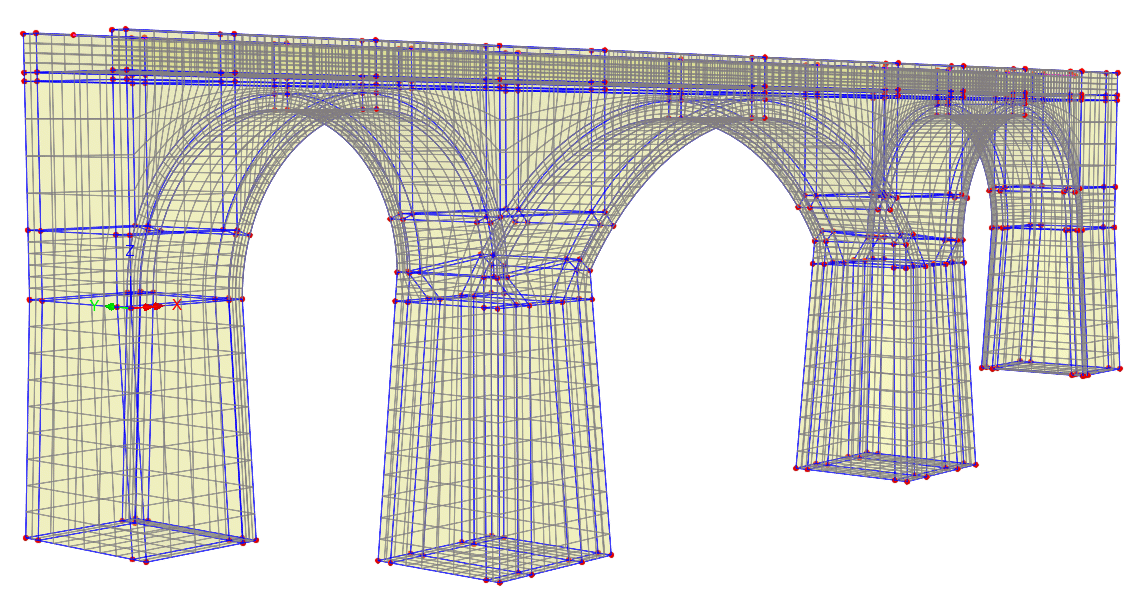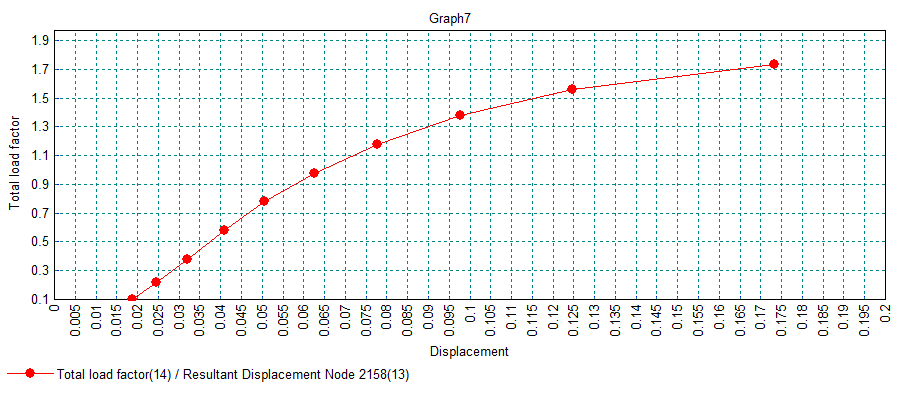Software Option for LUSAS Bridge
products
Masonry Bridge Wizard
The Masonry Bridge Wizard generates 2D
and 3D continuum models of single and multi-span masonry arch bridges
with semi-circular or segmental arches in a fraction of
the time it would take to manually model the same
structures. Create models that include piers and abutments, with or
without a skew, using linear or nonlinear materials.
Defining models
Define models using a series of tabbed
pages on which geometric values, material properties, any skew and
optional train loading are specified.
When all required data has
been entered and the type of model (2D or 3D) and analysis (linear or
nonlinear) selected, a model is generated using only the
quantities applicable to the type of model and analysis type.
Model creation / editing
Once automatically created, models can be further modified to incorporate changes to
geometry or material properties, particular foundation conditions, or to assign code specific train or vehicle
loads, or custom loading.

The continuum models
produced are for "macro modelling" of masonry, where the
masonry is considered as a continuous composite material - as opposed
to "micro modelling" where each block and each mortar joint
is modelled explicitly. The LUSAS concrete cracking and crushing
material model may be used to approximate the cracking and crushing
behaviour of masonry.
Viewing results
As part of creating a
model, common features, such as those representing abutments, piers,
fill, arch rings, spandrel walls, parapets etc., are grouped and named to allow for easy
manipulation of the model, or selective viewing of results.
Within LUSAS, view
results as contours of principal stress and, when nonlinear analysis
is carried out, as cracking and crushing patterns, capacity curves,
and graphs of a nodal displacement versus Total Load Factor (TLF).

2D model - Stress Smin in abutments, piers, arch rings and backing.

View regions of cracking
and crushing on a deformed mesh

View graphs of total
load factor against displacement for live load at selected locations.
Find out more
|